See Inside:
The Who’s Who of Biology: A History Lesson and A Case Study
The Blueprint of Life: DNA, Genetics and Evolution
Valentine’s Special: The Science Behind Love
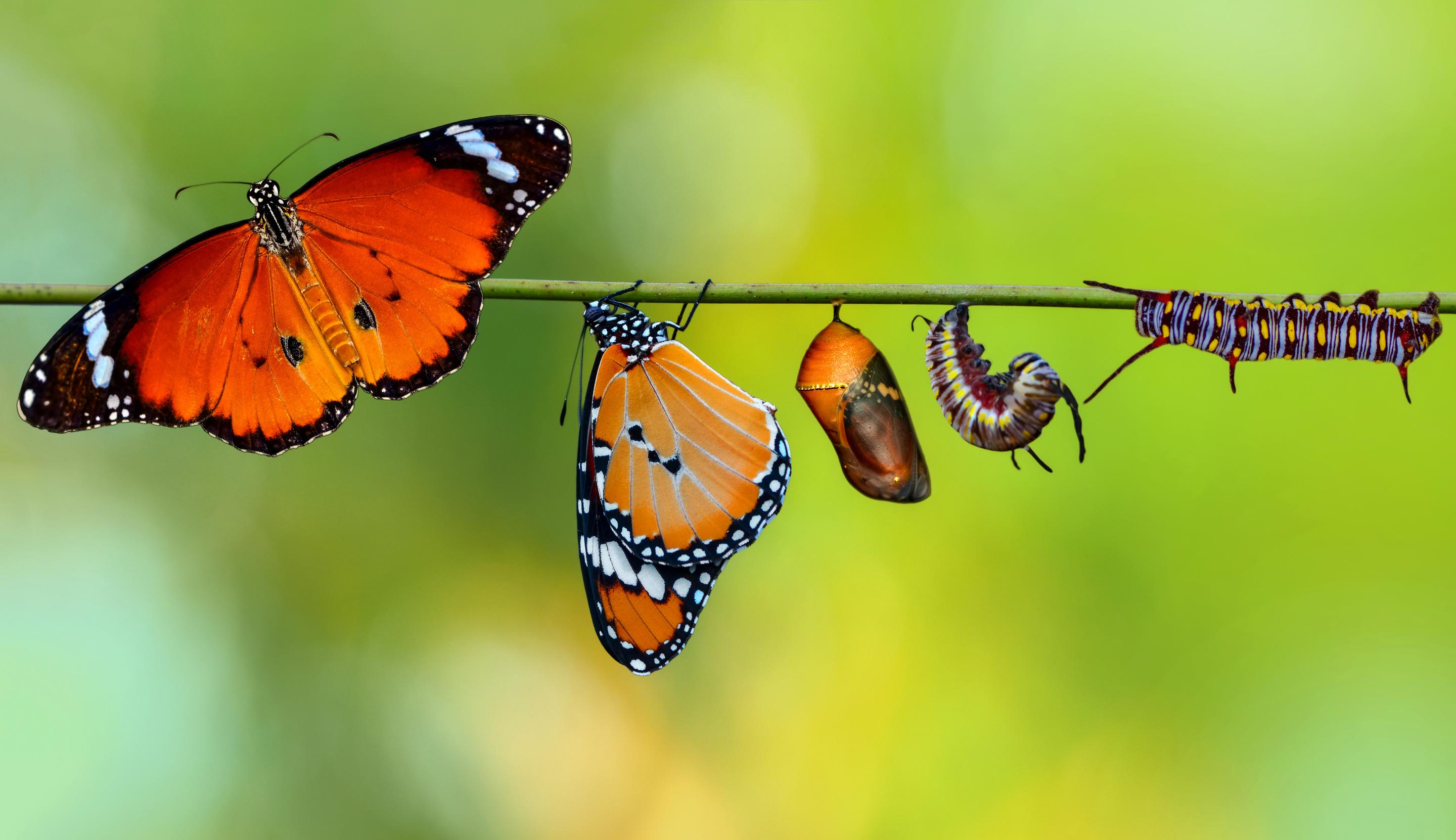
Lessons From The Box Office: What do movies teach us about Biology?
Animal Planet: A Deep Dive Into How Animals Function
On Health and Happiness: HIV, Additives and Happy Hormones
Back To The Basics: An Overview of Photosynthesis
The CellCycle
Exchange and Renew. FEBRUARY ISSUE 2024 THE CELL CYCLE
“It is not the strongest of species that survives, nor the most intelligent, but the one most responsive to change. ”
Charles Darwin
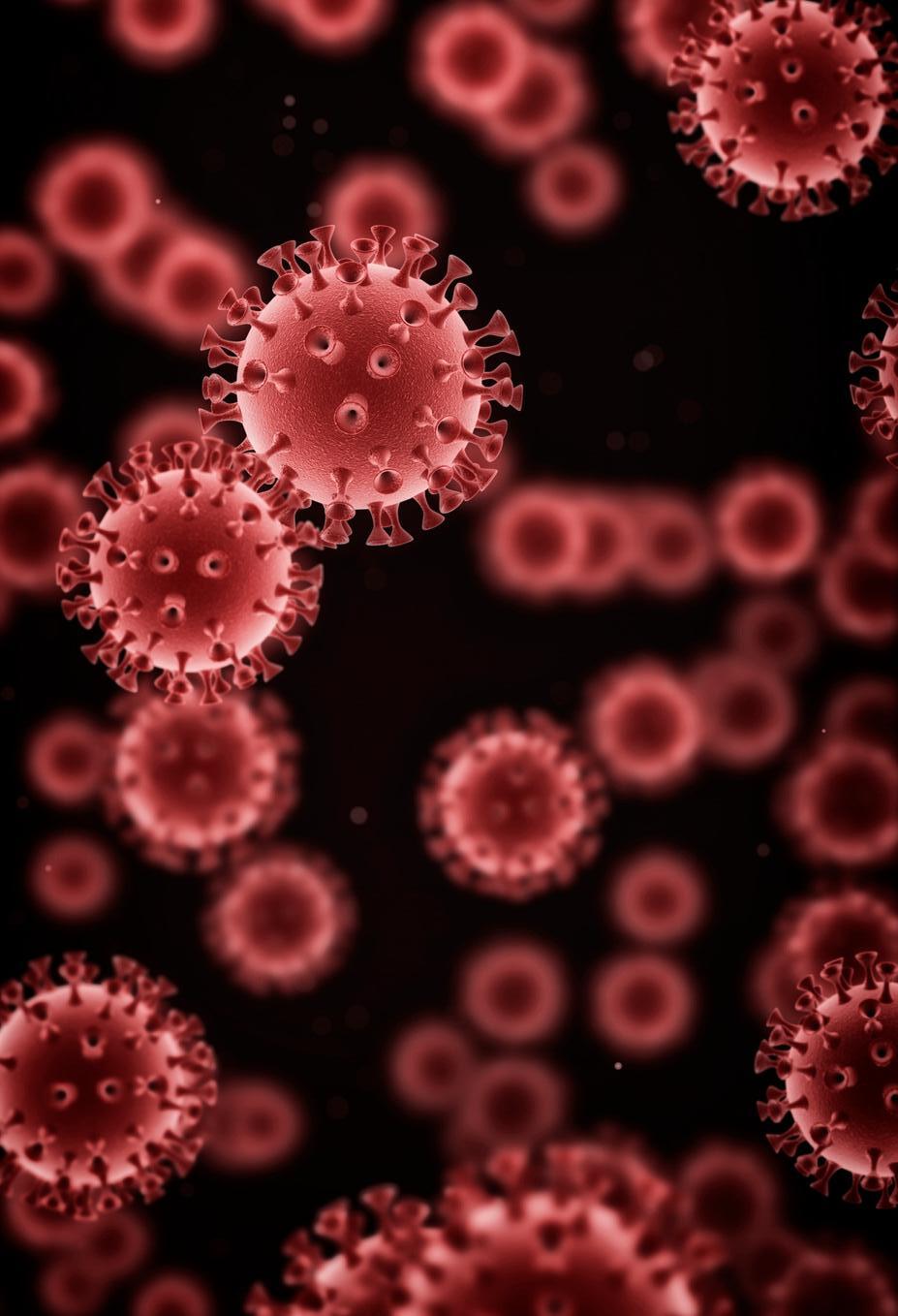
Editor’sNote
Contributors
TheWho’sWhoofBiology
The History of Biology
Biocon: A Case Study
DNA,GeneticsandEvolution
Light-Coloured VS Dark Coloured Moths
Sea Lampreys: Long Lost Cousins
DNA Fingerprinting
Valentine’sSpecial
The Science Behind Love
LessonsFromTheBoxOffice
The Lion King
Genetic Engineering: A Dystopian Nightmare
AnimalPlanet
Why Do Poison Dart Frogs “Tap Dance” With Their Toes?
An Assortment of Trivia
OnHealthandHappiness
Breaking Down The Stigma Around HIV/ AIDS!
Instant Noodles: Friend or Foe?
Brain Juice
BackToTheBasics
Photosynthesis: An Infographic
Acknowledgements
Bibliography
Contents 40 60 10 12 16 18 20 24 27 28 30 32 34 36 38 41 42 43
Editor’s Note
Anaaya Singhania
Founder, Editor-in-Chief
Welcome to the latest issue of our student-led biology magazine! We are thrilled to present a collection of articles that breathe new life into the field of biology
Our contributors have embraced creativity and innovation, offering refreshing perspectives on a diverse range of topics. Our writers have seamlessly woven together concepts from various disciplines, demonstrating the interconnectedness of biology with fields such as business, history, and even the media. This interdisciplinary approach not only enriches our understanding of biological phenomena but also underscores the importance of collaboration across academic boundaries.
The writers’ genuine interest in their chosen topics shines through in every word, inspiring us all to delve deeper into the wonders of the natural world Equally hea love for biology mirror our own. Your enthusiasm lifelong learners and science enthusiasts.
As we reflect on the growth of our magazine, we each issue, we see our publication gaining mome contributors and the unwavering support of our re a platform for exploration, discovery, and celebr for joining us on this journey, and we look forward

FEBRUARY ISSUE 2024 THE CELL CYCLE
04
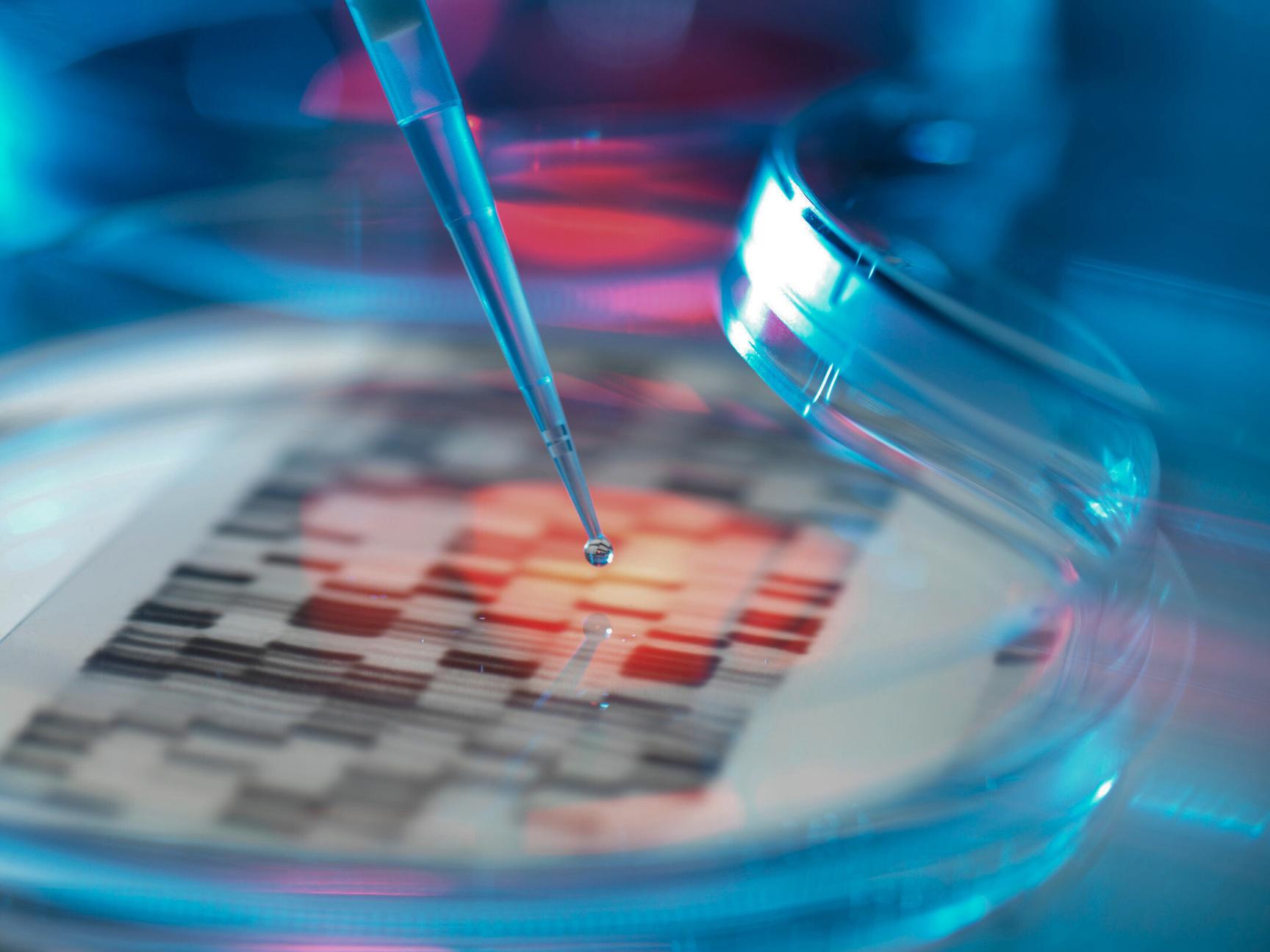
Contributors



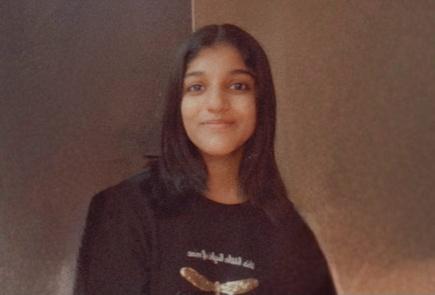

FEBRUARY ISSUE 2024 THE CELL CYCLE
Adithi Ponnambalam Grade 11
Nysha Mordani Grade 11
Tia Shukla Grade 6
Sneha Ganti Grade 11
Aditya Sankar Grade 11
Spraha TS Grade 11
Aanika Krishnan Grade 11
06
Avanthika Krishnan Grade 11
HOD HOD
Contributors






 Vasudha Bansal Grade 11
Aditi Ranga Grade 11
Saanvi Venugopal Grade 11
Nivrithi Balachandran Grade 6
Jinisha Setiya Grade 11
Manvi Mittal Grade 11
Vasudha Bansal Grade 11
Aditi Ranga Grade 11
Saanvi Venugopal Grade 11
Nivrithi Balachandran Grade 6
Jinisha Setiya Grade 11
Manvi Mittal Grade 11
FEBRUARY ISSUE 2024 THE CELL CYCLE 07
Jahan Jethani Grade 11
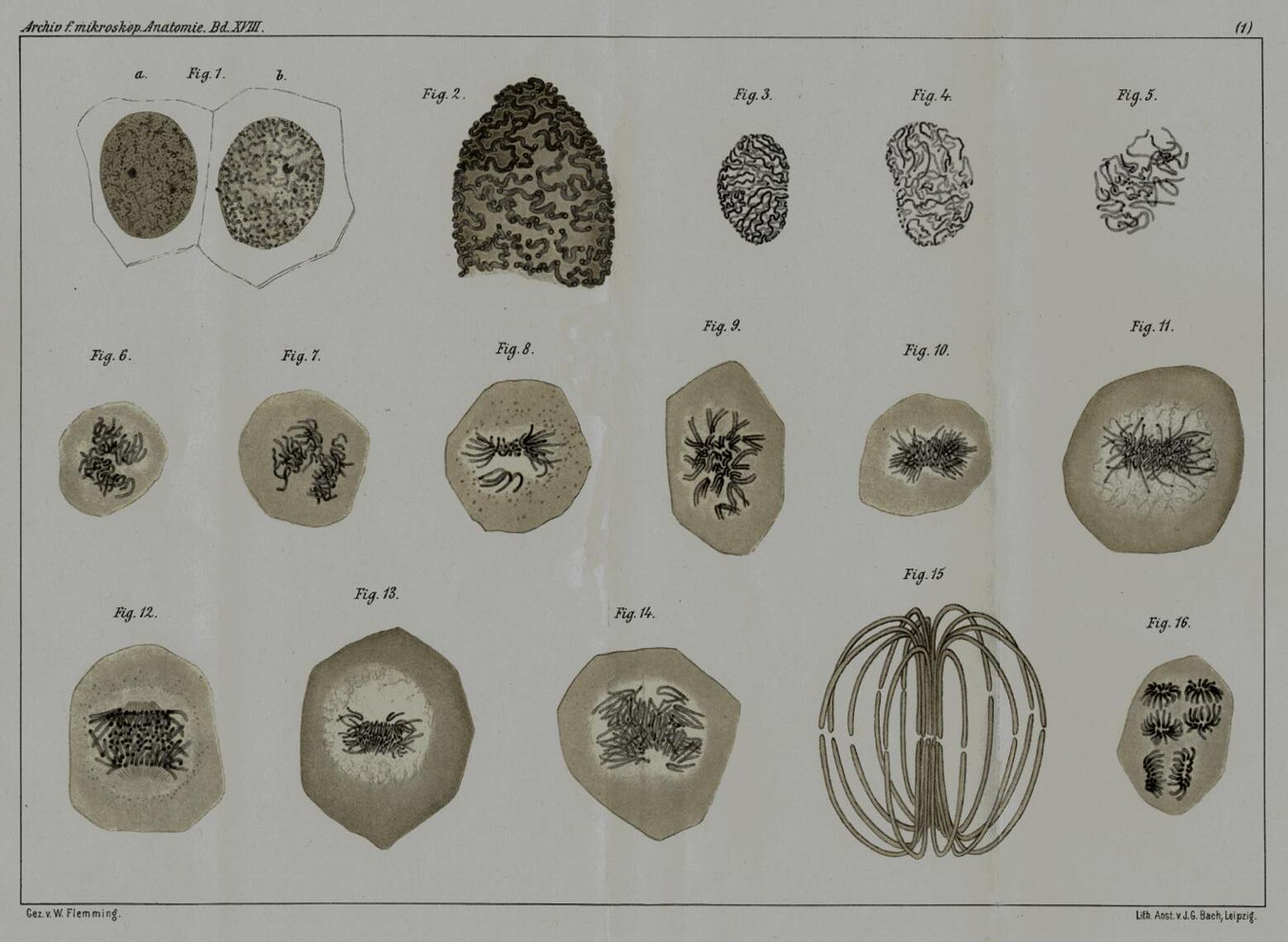
The Who’s Who Of Biology

The History of Biology: A Journey
Biology, the scientific study of life, has a rich and fascinating history that spans centuries. From ancient philosophical ponderings to ground-breaking discoveries in the modern era, the field has evolved and expanded, revealing the intricate web of life on Earth This article takes you on a journey through the milestones in the history of biology, highlighting the contributions of brilliant minds that have shaped our understanding of life
The roots of biology can be traced back to ancient civilizations, where early philosophers and naturalists sought to comprehend the mysteries of life In ancient Greece, figures like Aristotle made significant contributions by classifying living organisms and laying the groundwork for systematic observation. The concept of spontaneous generation, proposing that living organisms could arise from non-living matter, also emerged during this period.
During the Middle Ages, biology was influenced by religious beliefs, and scholars like Albertus Magnus and Thomas Aquinas attempted to reconcile scientific observation with
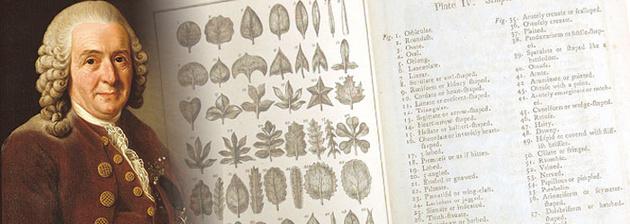
religious doctrine However, progress was slow, and many biological ideas were shaped by myths and superstitions. The advent of the Renaissance in the 14th century sparked a renewed interest in the natural world, leading to a revival of scientific inquiry.
The 17th century marked a significant turning point in the history of biology with the advent of the scientific method Pioneering figures like Robert Hooke (who first observed cells through a microscope) and Anton van Leeuwenhoek (who discovered microorganisms) laid the foundation for understanding life at the microscopic level.
Meanwhile, naturalists like Carl Linnaeus developed the binomial nomenclature system for classifying and naming organisms, establishing a systematic approach to biology
The 19th century witnessed the ground-breaking development of the theory of evolution. In his seminal work ‘On the Origin of Species (1859)’, Charles Darwin proposed the concept of natural selection as the driving force behind the diversity of life. This revolutionary idea challenged prevailing beliefs about the fixity of species and provided a unifying
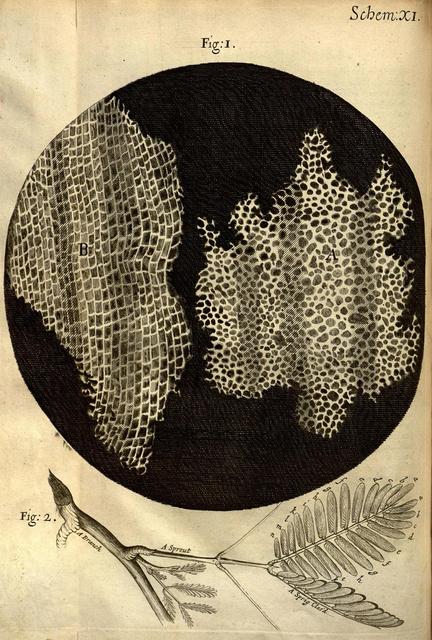 Jahan Jethani, Grade 11
Jahan Jethani, Grade 11
FEBRUARY ISSUE 2024 THE CELL CYCLE 10
Cells discovered by Robert Hooke
Carolus Linnaeus: The Father of Taxonomy
Advancements in microscopy and cell theory further transformed the field of biology in the 19th century. Scientists like Matthias Schleiden, Theodor Schwann, and Rudolf Virchow formulated the cell theory, asserting that cells are the basic unit of life that all living organisms are composed of. This laid the groundwork for understanding the structure and function of living organisms at the cellular level.
The 20th century brought about a molecular revolution in biology with the discovery of the structure of DNA James Watson and Francis Crick, with crucial input from Rosalind Franklin, unveiled
foundation for the field of molecular biology, unravelling the mechanisms of genetic inheritance and paving the way for advancements like the Human Genome Project.
In the 21st century, biology continues to advance at an unprecedented pace Technological innovations such as CRISPR-Cas9 gene editing and advancements in imaging techniques have opened new frontiers in genetic engineering and cell biology. The integration of computational methods and big data analysis has also played a crucial role in understanding complex biological systems.
curiosity to understand the intricate tapestry of life. From ancient musings to cutting-edge research, the discipline has come a long way As technology and knowledge continue to advance, the journey to unravel the mysteries of biology remains an ongoing and thrilling exploration of the natural world.
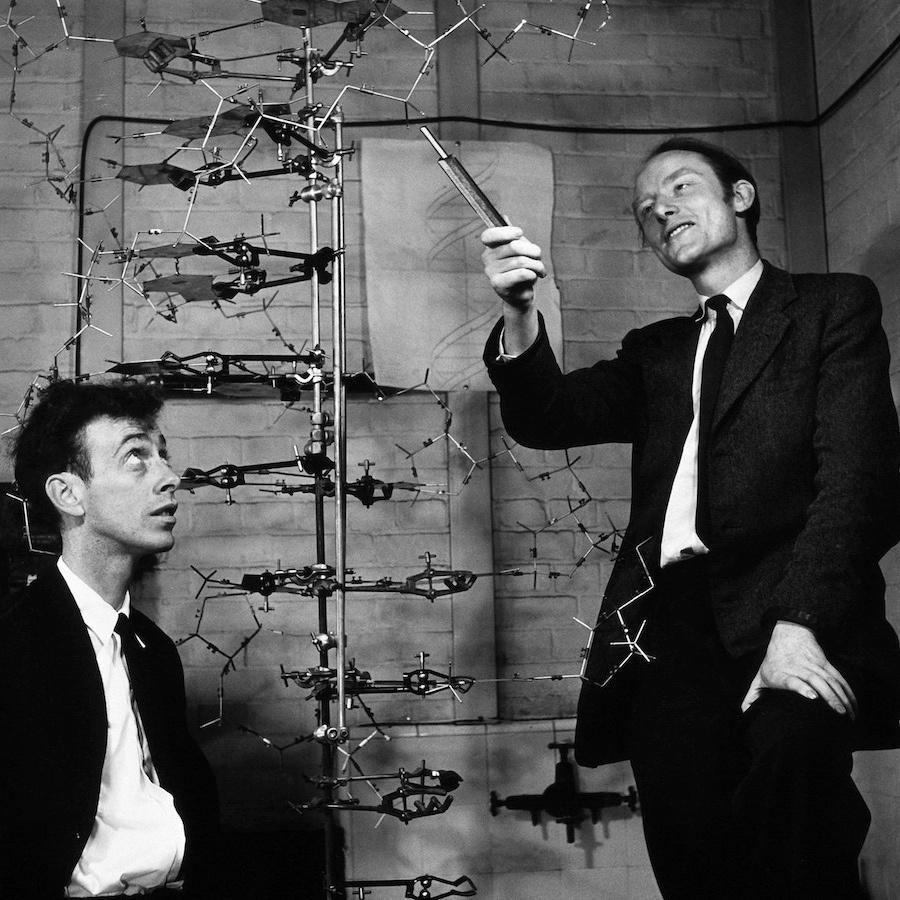
FEBRUARY ISSUE 2024 THE CELL CYCLE 11
James Watson and Francis Crick’s model of the DNA
Biocon: A Case Study Looking at Biology From A Business Perspective
Manvi Mittal, Grade 11
The intersection of business and biology represents a fascinating realm where innovation, bioentrepreneurship, and scientific advancements converge. This essay delves into the remarkable journey of Biocon, a biotechnology company, and its founder, Kiran Mazumdar-Shaw. It explores how the integration of business acumen with biological sciences has led to ground-breaking achievements, not only in healthcare but also in reshaping the landscape of the global biotechnology domain.
Biocon, founded in 1978 by Kiran Mazumdar-Shaw, began as a small enzyme production company in Bangalore, India. However, today it is a global biopharmaceutical powerhouse. Mazumdar-Shaw's vision was to connect biotechnology to unmet medical needs. However, the journey was fraught with challenges.
She began in the garage of her rented Bengaluru home with a start-up capital of Rs 10,000 Initially, she encountered credibility issues due to her young age, gender, and untested business

plan. She was unable to get funds for her company during the early phases of its operation Limited finance, a lack of infrastructure, and scepticism about biotechnology posed major obstacles.

Despite these challenges, persisted, and of its founding, was able to ymes and ship nited States and g the first Indian so Mazumdar year's earnings to re property with and in the future. asible because she he power of to transform has been driven devotion to
FEBRUARY ISSUE 2024 THE CELL CYCLE 12
The corporation invested extensively in R&D to pioneer breakthrough biotechnology solutions -- from creating India's first domestic insulin to making a significant discovery with the production of "BIOMAb EGFR" (an antibody-based therapy used to treat some forms of cancer, specifically hand and neck cancer) Biocon earned Rs 990 crores the year this antibody was introduced. This amazing achievement was made possible by their competitive advantage, strategic alliance, and ability to strike a balance between affordability and profitability.

Biocon has solidified its position as a frontrunner in the biotechnology sector. Biocon's strategic engagement with global giants such as Mylan and Bristol Myers Squibb aided the company's scale-up plans and international expansion efforts. By partnering with recognised industry players, Biocon increased its credibility, reputation, and market visibility on a global scale Biocon's collaboration with Mylan on the development and commercialization of biosimilars, such as insulin and monoclonal antibodies, enabled the company to expand its manufacturing facilities, invest in cutting-edge equipment,
and increase production capacity to meet the growing demand for biosimilars. This strategic alliance increased Biocon's standing in the biosimilars industry, increasing its global footprint and enhancing access to high-quality biopharmaceuticals worldwide.
To conclude, Biocon's transformation from a tiny enzyme production company to a global biopharmaceutical powerhouse highlights the ground breaking benefits of combining business acumen and biological sciences
Biocon's success has been driven by Kiran Mazumdar-Shaw's vision and dedication, as well as its strategic shift towards biopharmaceuticals, concentration on innovation, and important relationships with industry leaders
Through its triumphs, Biocon has emerged as a major force in the biotechnology industry.
FEBRUARY ISSUE 2024 THE CELL CYCLE 13
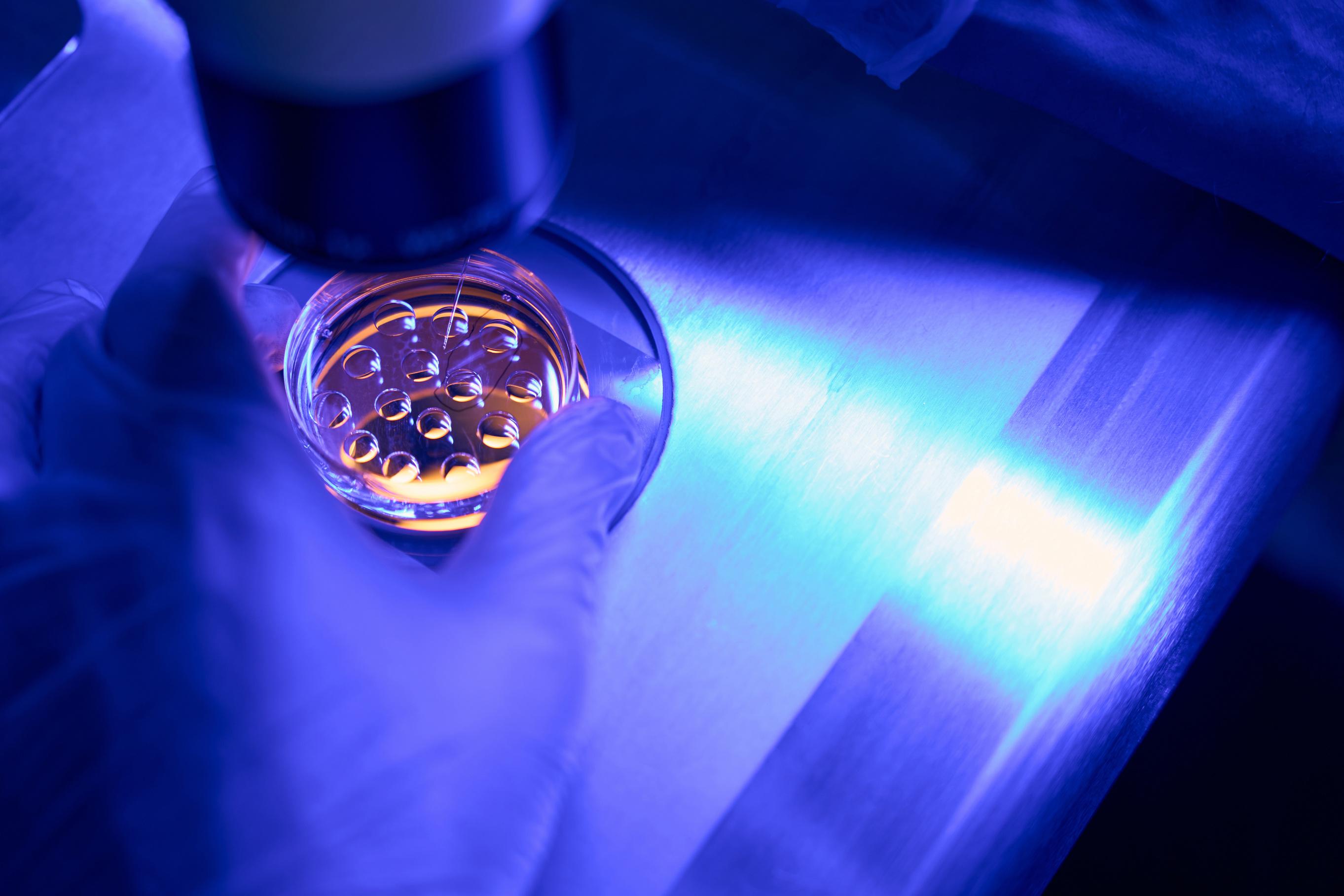
DNA, Genetics and Evolution
The Blueprint of Life
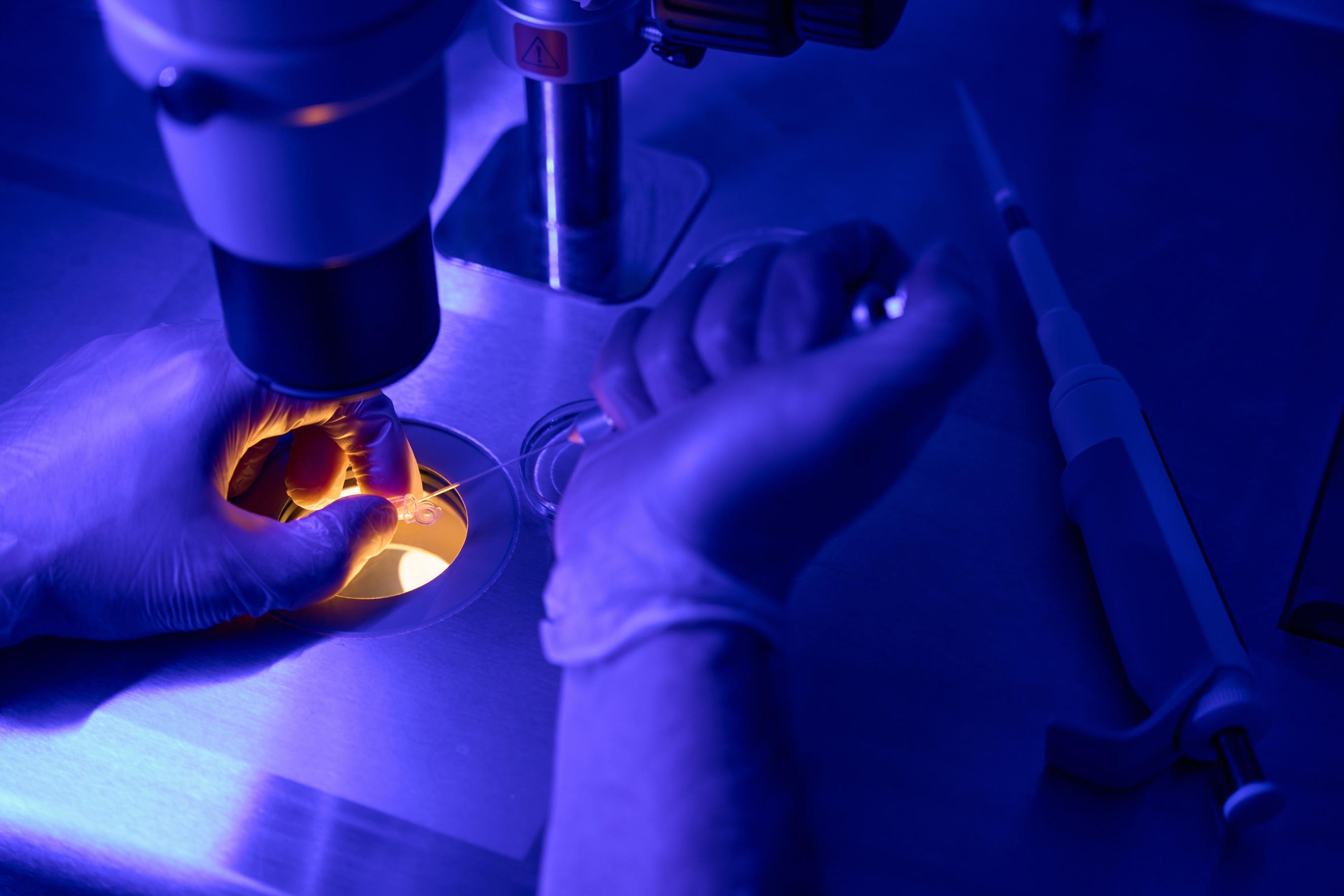
Light-Coloured Moths VS Dark-Coloured Moths
An Example of Evolution
Jinisha Setiya, Grade 11
Ever wondered why we only see dark-colored moths and not light-colored moths nowadays? Charles Darwin’s theory of evolution has the answer. In modern biology, the hypothesis of evolution by natural selection is a fundamental concept; it completely altered how we think about life on Earth. It explains how all living things are related and how they have changed over time through a process driven by environmental pressures.
The theory of evolution stands on four pillars:
Variation: This principle recognizes that members of a population are not all the same These changes happen because of mutations in genes, which are the basic building blocks of heredity and can affect an organism's phenotypic, or outward characteristics.
Heritability: According to this important factor, some of these variations can be transferred from parents to children. The transfer of advantageous traits that may benefit future generations is made possible via heritability.
Differential Survival and Reproduction: This pillaremphasizes that organisms are more likely to thrive and reproduce if their characteristics are better adapted to their surroundings. Possessing beneficial qualities increases the probability that the offspring will inherit them
Descent with Modification: Species develop adaptations over generations as beneficial features develop in a population as a result of differential survival and reproduction. New species that have evolved from their common parent may arise as a result of this gradual transition The "descent with modification" process is reflected in these alterations.
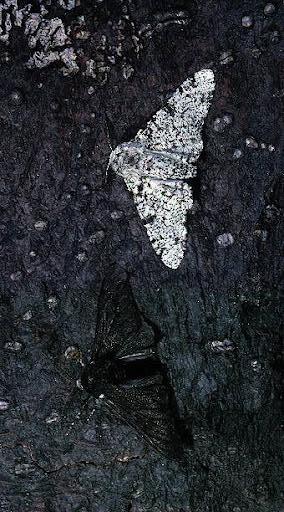
FEBRUARY ISSUE 2024 THE CELL CYCLE
16
So, how do these pillars affect the population dynamics of moths on our planet?
Variation: There were two primary colour variations of peppered moths: the normal light form and the melanisticdark version Mutations in the genes regulating the generation of pigments caused the variation in pigmentation.
Differential Survival and Reproduction:
- Pre-Industrial Revolution: In the pre-industrial age,light-coloured moths blended in better with the environment due to clean tree bark, which reduced their vulnerability to bird predation. Because of their increased chance of survival, they had an increased ability to reproduce. Therefore, the population had a higher percentage of light-coloured moths
- Post-Industrial Revolution: Dark-coloured moths grew better at hiding as a result of air pollution darkening the trees. Now more noticeable, the lightcoloured moths became easier targets. Differential survival and reproduction were the outcomes of this environmental adjustment, favouring the dark colour
Heritability: The moth's colour was determined by heritable genes. Dark moths generated dark offspring, and light-coloured moths tended to produce light-coloured offspring This made it possible for the colour differences to endure over generations.
Descent with Modification: The frequency of the melanistic form in the moth population grew substantially over several generations exposed to industrial pollution This shift illustrates how differential survival and reproduction can cause a population to evolve through the accumulation of advantageous characteristics, in this instance thedark colour. This is an example of "descent with modification," in which a population modifies itself to adapt to its surroundings and pass those changes on to succeeding generations.
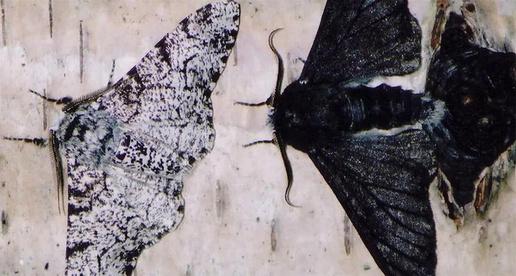
To conclude, the basis of modern biology is the hypothesis of evolution by natural selection It provides a strong foundation for comprehending the immense diversity of life on Earth by explaining the relationships among all living things and how they have evolved to adapt to their surroundings over incredibly vast amounts of time. The theory continues to direct study in a variety of scientific fields, including conservation biology, agriculture, and medicine. It is continuously improved by new discoveries.
Evolution by natural selection, with its long history, continues to be a symbol of the strength of science and its capacity to provide light on the amazing mechanisms forming the living world. According to this theory, little differences within a population combined with changes in the environment could end up in significant evolutionary change. The peppered moth population responded through differential survival and reproduction to the soot-darkened environment, demonstrating the ability of natural selection to propel the formation of novel features and, eventually, even whole species This continuing tale reminds us that life is continually changing in an unending dance with its surroundings, and acts as a microcosm of the larger story of evolution
FEBRUARY ISSUE 2024 THE CELL CYCLE 17
Sea Lampreys: Long Lost Cousins
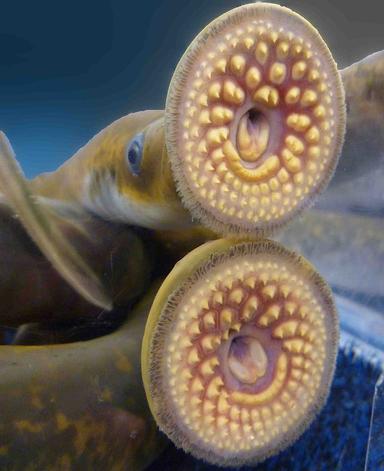
Sea Lampreys are fascinating yet terrifying and dangerous creatures. Like other vertebrates, they have a backbone and skeleton. But, they are missing a significant feature on their heads; their jaw Most vertebrates, like humans, have jaws.
Recent study from the Stowers Institute for Medical Research in Missouri, US, suggest that Sea lampreys and humans, as well as other vertebrates, share identical genes that structure and subdivide the hindbrain. However, these genes are part of a circuit-like network that needs to be specifically inputed and directed to build, and structure, the hindbrain correctly.
The hindbrain is important in regulating key and vital functions like sleep, respiration, motor coordination and organisation and reflexes.The study recognised a typical molecular cue as part of the gene directing the circuit for the hindbrain pattern in Sea Lampreys
This evolutionary discovery has unified the field of biology drawing together the subject from diverse areas like genetics, ecology and physiology The information can help us solve real-world applications and situations that have a biological basis.
This cue is called retinoic acid Most commonly known as vitamin-A Although the researchers knew that retinoic acid was used in the gene circulatory, to build the hindbrain in more complex species, it was thought that more primitive species, like sea lampreys, had not evolved it. Astonishingly, they had found that the Sea Lampreys core circuits are also initiated by retinoic acid, providing evidence
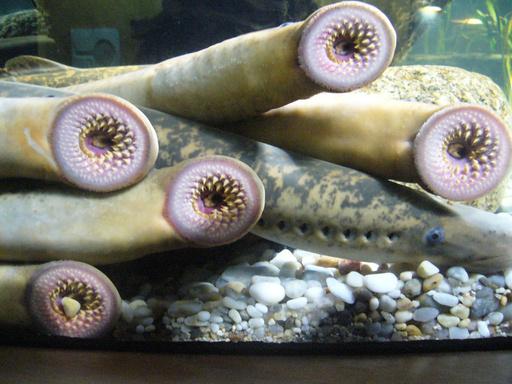
that we and the sea monsters are more closely related than we previously imagined.
“People thought that because Sea Lampreys lack a jaw, their hindbrain was not formed like other vertebrates,” said Robb Krumlauf ,the study’s corresponding author. “We have shown that this basic part of the brain is built exactly the same way as mice and even humans ”
Researchers have now found that retanoic acid is another key player responsible for vital steps for development like, in our brainstem In addition, if the hindbrain formation is a common feature for all vertebrates, other features may be responsible in explaining their incredible diversity
“We all derived form a common ancestor” concluded Alice Bedois ,lead author of the study. “Sea Lampreys have provided an additional clue Now we need to look even further back in evolutionary time to discover when the gene circuitry governing hindbrain formation was first evolved.”
Nivrithi Balachandran, Grade 6
FEBRUARY ISSUE 2024 THE CELL CYCLE 18
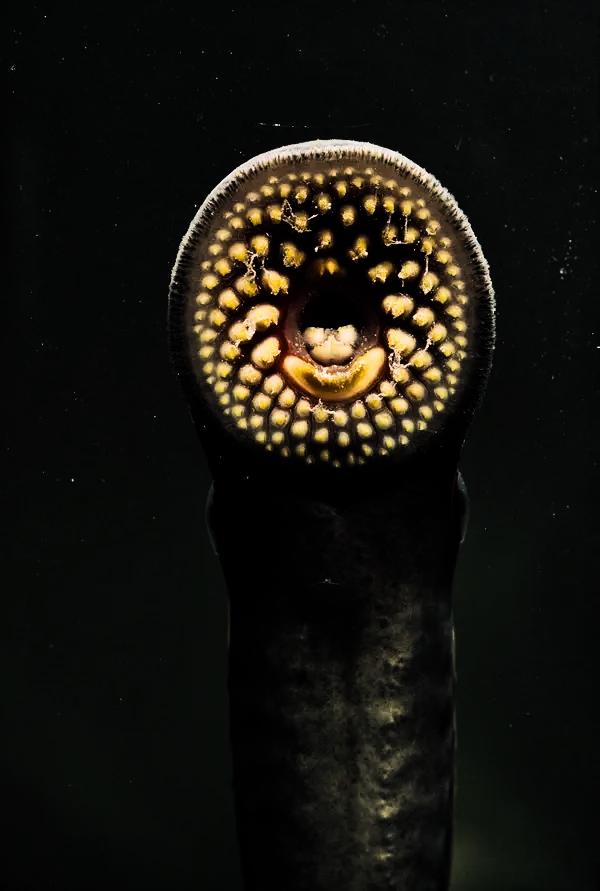
DNA Fingerprinting
Saanvi Venugopal, Grade 11
Polymerase Chain Reaction
At a crime scene, we can find various DNA evidence of the victim and/or even the perpetrator. However, the DNA fingerprint obtained could be very little amounts, e.g: a blood drop, a hair strand.
This biotechnology process of PCR provides a way to create more copies of a fragment of DNA, which are used in analysing and testing.
How does PCR work?
It Requires:
The DNA samples
A buffer (maintains a constant environment for the reaction)
DNA primers (the initializer)
DNA polymerase (like the Taq polymerase enzyme)
DNA nucleotide (for the DNA polymerase to build with)
The 3-step process:
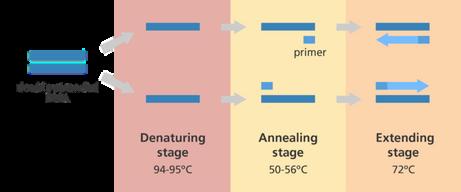
1. Denaturation: In order to separate the two strands of the DNA molecule, heat isadded at this stage.
2 Annealing: The two separated DNA strands from the previous stageare linked together using primers after being chilled to a particular temperature. The temperature at which you do this step should enable the primers to bind the particular DNA segment that iswishedto beamplify.
3. DNA synthesis: DNA polymerase will then work on the separated strands, and it will use the DNA nucleotides as its building material to amplify the DNA. The temperature at this step must be ideal for the specific DNA polymerase used.
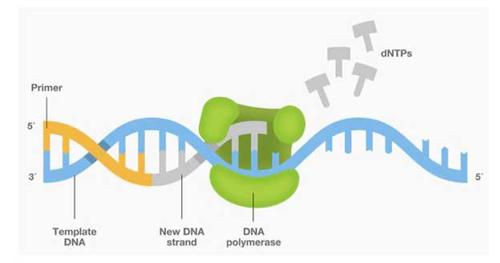
After finishing the 3 steps, two double-stranded DNA molecules are formed These steps must be repeated multiple times to make more copies of the DNA.
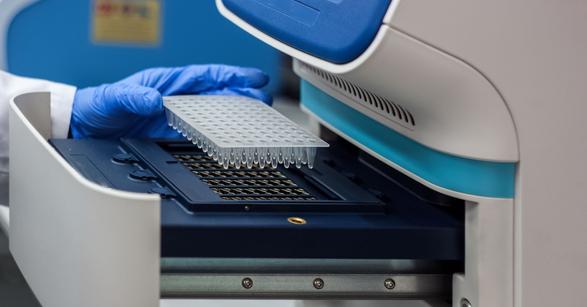
FEBRUARY ISSUE 2024 THE CELL CYCLE 20
Gel Electrophoresis
Another biotechnology technique called Gel electrophoresis, is used to separate molecules based on their sizes, e g: DNA molecules It is helpful in identifying whether the DNA fingerprints found matches a suspect or not.
Preparing the DNA samples:
WhenanalysingDNA by electrophoresis, restriction enzymes are used to cut the DNA into small pieces. These enzymes can cleave DNA from very specific regions associated with specific DNA bases. The same restriction enzymes must be used to cut all the DNA samples that are beingcompared to ensurethe same DNA samplepoints are cut
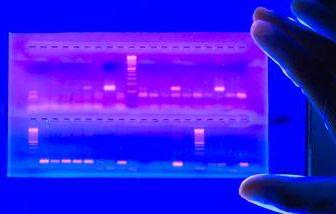
The principle and process of gel electrophoresis:
The building block of DNA, the nucleotide, contains negatively chargedphosphates Thus, they give a negative charge to each DNA This is an important factor in the gel electrophoresis process because it relies on the DNA molecule having a negative harge to separate the molecules.The device runs an lectric charge through a gel, usually made of garose (polysaccharide polymer) this gel allows the DNA molecules to pass through it One end of the el has holes called wells. The wellsare where the DNA is inserted. The regionof the gel atthe wells is egatively charged and the regionof the gel at the ther end is positively charged. When we turn on the machine and let the DNA pass through the gel, the DNA moves to the positive side because the DNA is egatively charged.

However, all cut pieces of DNA move at different peeds. Longer pieces of DNA take longer to pass hrough the gel than shorter pieces of DNA because hey usually have a relatively higher molecular weight. So, we ended up with the DNA fragments pread out,with the longer piecesnear the wells and he shorter pieces closer to the opposite side of the el.The settledDNA fragments are called DNA ands Too see them, one muststain the gel itself ndlook at it under UV light the bands will be dentical if the DNA samples are clones - that is, if hey are from the same person.
FEBRUARY ISSUE 2024 THE CELL CYCLE 21
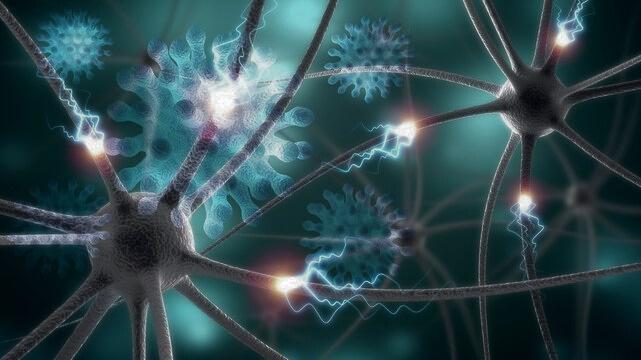
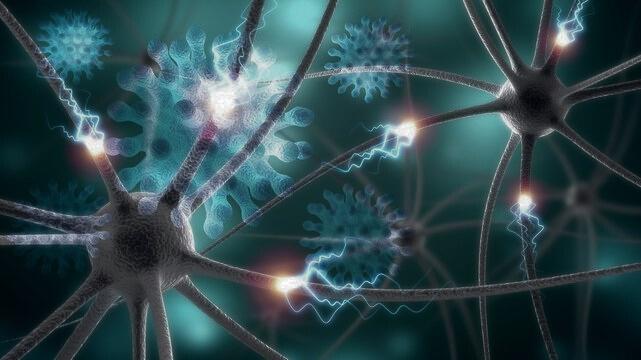
Valentine‘s Special
The Science Behind Love Exploring The Psychology Behind Attraction
Aditi Ranga, Grade 11
Love, with its intoxicating highs and heart-wrenching lows, has been a subject of fascination for centuries. But have you ever asked yourself how or why you feel love? What is it?! There is a lot more to love than butterflies in your stomach and your heart thumping out of your chest. Together let’s explore the interplay of biology and psychology behind love and attraction.
At its core, love is a biological phenomenon, orchestrated by a symphony of hormones and neurotransmitters that course through our bodies and brains. Dopamine is a neurotransmitter, often known as the ‘feel good’ neurotransmitter, that flows through our body in abundance during the initial stages of attraction, creating a euphoric rush when we’re around the object of attraction
A surge of dopamine = the feeling of ‘falling in love’.
The role of dopamine, however, should not be confused with the same feeling of having ‘butterflies in your stomach’ This is due to a rush of norepinephrine in your central nervous system (along with
dopamine of course!). It is both a hormone and neurotransmitter and works as a chemical messenger between your nerve cells, released during ‘fight or flight’ situations: when you’re excited, nervous, or anxious. It is a sophisticated way for our nervous system to communicate with us. Did you know that a moment that gave you butterflies in your stomach years ago can have the same effect in the present? See for yourself!
Dopamine is just one piece of the puzzle. Oxytocin, also known as the ‘
plays a very crucial role in establishing an emotional bond between partners. Released during moments of physical touch, such as hugs or kisses, oxytocin promotes feelings of trust, security, and connection. It also promotes bonding in platonic relationships, so go hug a friend for 30 seconds until your body starts releasing oxytocin!
Additionally, serotonin, another neurotransmitter, regulates mood and plays a role in attraction. Studies have shown that serotonin
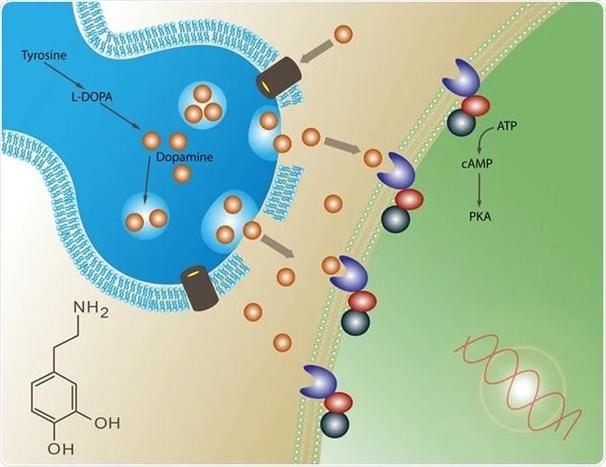
FEBRUARY ISSUE 2024 THE CELL CYCLE 24
romantic partner, contributing to feelings of contentment and happiness. On the other hand, low serotonin levels have been linked to obsessive thoughts and behaviors commonly associated with infatuation.
While biology provides the foundation for love, psychology adds layers of complexity to our understanding of romantic attraction. Attachment theory, pioneered by psychologist John Bowlby, posits that our early childhood experiences shape our attachment styles and influence our adult relationships. Individuals with secure attachment styles tend to feel comfortable with intimacy and find it easier to form healthy relationships In contrast, those with insecure attachment styles may struggle with trust issues or fear of abandonment, impacting their ability to establish fulfilling relationships, by approaching the relationship with uncertainty in the first place Moreover, our personal preferences and experiences play a significant role in shaping who we find attractive While physical
appearance certainly plays a part in initial attraction, psychological factors such as personality, sense of humor, values, and shared interests become increasingly important as relationships develop. This explains why two people can have vastly different opinions on the attractiveness of the same individual – beauty truly is subjective
In addition to this, cultural norms and societal expectations also influence our perceptions of love and attraction From fairy tale romances to celebrity power couples, media portrayals of romance shape our ideals and expectations of love. These representations often perpetuate myths and stereotypes about relationships, leading to unrealistic standards or beliefs about love. Adding to the point of SUBJECTIVITY!
The fluid and context-dependent nature of love can be seen through different expressions of love and intimacy portrayed by individuals from different backgrounds & cultures. Love is differently represented by different cultures
In conclusion, love is a multifaceted phenomenon that defies simple explanation. It is a delicate dance between biology, psychology, and social factors, each playing a unique role in shaping our experiences of attraction and attachment. While we may never fully unravel the mysteries of love, understanding the interplay of biology and psychology offers valuable insights into the complexities of human relationships. So, the next time you find yourself being swept away by love, remember the layers beneath the surface Good luck!
FEBRUARY ISSUE 2024 THE CELL CYCLE 25
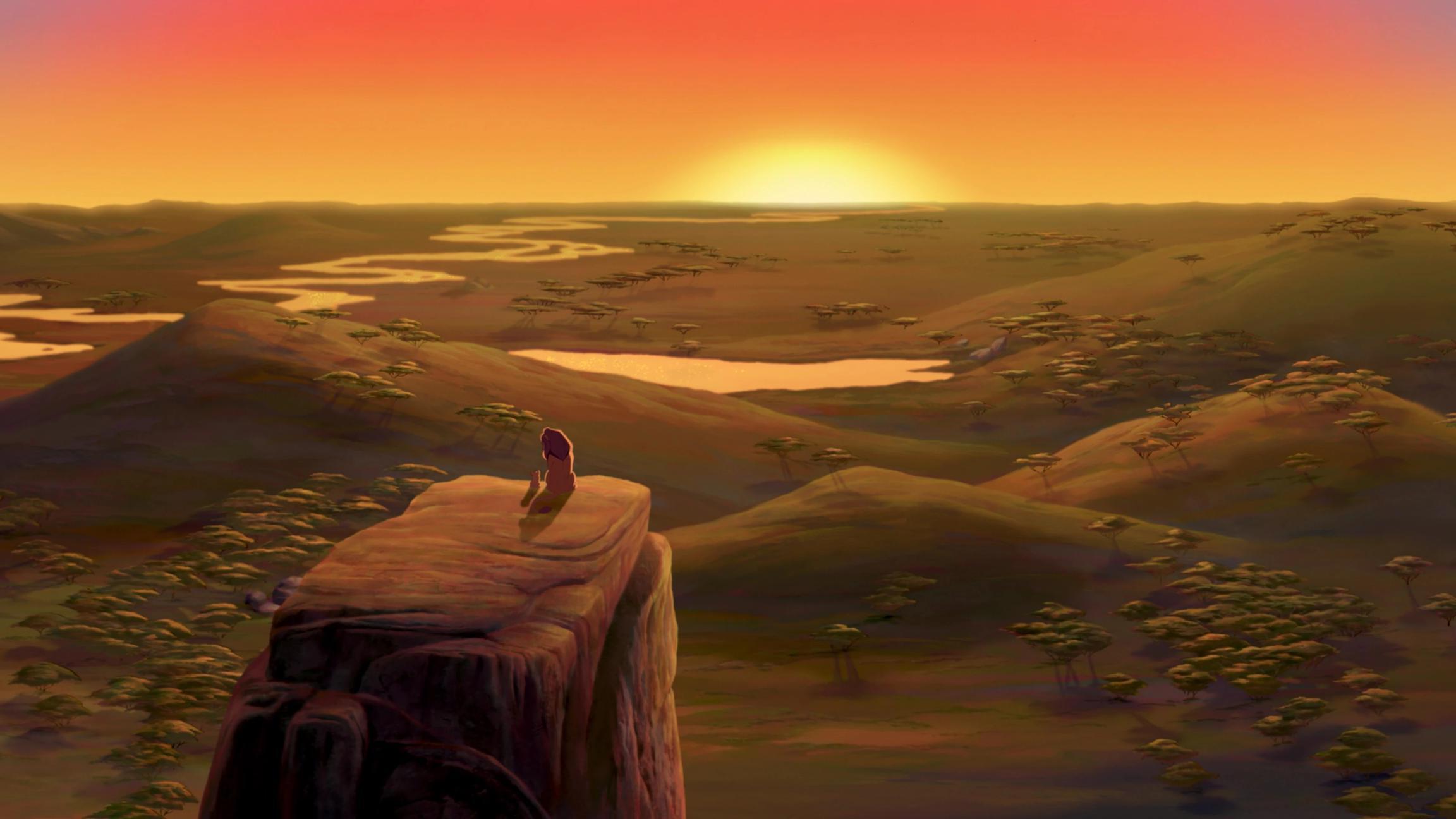
Lessons From The Box Office
The Lion King A Lesson On Ecological Succession
Wearing a scientific lens, one can consider the portrayal of the circle of life in "The Lion King" to be representative of the phenomenon of ecological succession.
First of all, as in the film, the passing of his father, Mufasa, causes Simba to endure a disruption in his life. As Simba develops and eventually assumes leadership of the Pride Lands, this incident initiates a sequence of adjustments and changes. Secondly, at the end of the film when the sun comes out, all the dead plants start rejuvenating and the animals start coming back. These small plants start growing where there have been no plants: this is an exact description of secondary succession.
Secondary succession occurs when an ecosystem experiences a disturbance—like a fire or the removal of vegetation which creates space for new plant and animal species to increase and become established. The environment goes through a process of healing and renewal over time.
Despite being a work of fiction, "The Lion King" has parts that can be compared metaphorically to actual ecological processes like succession Although, in reality, the succession would not take place at such a fast pace, this analogy does portray this idea effectively.
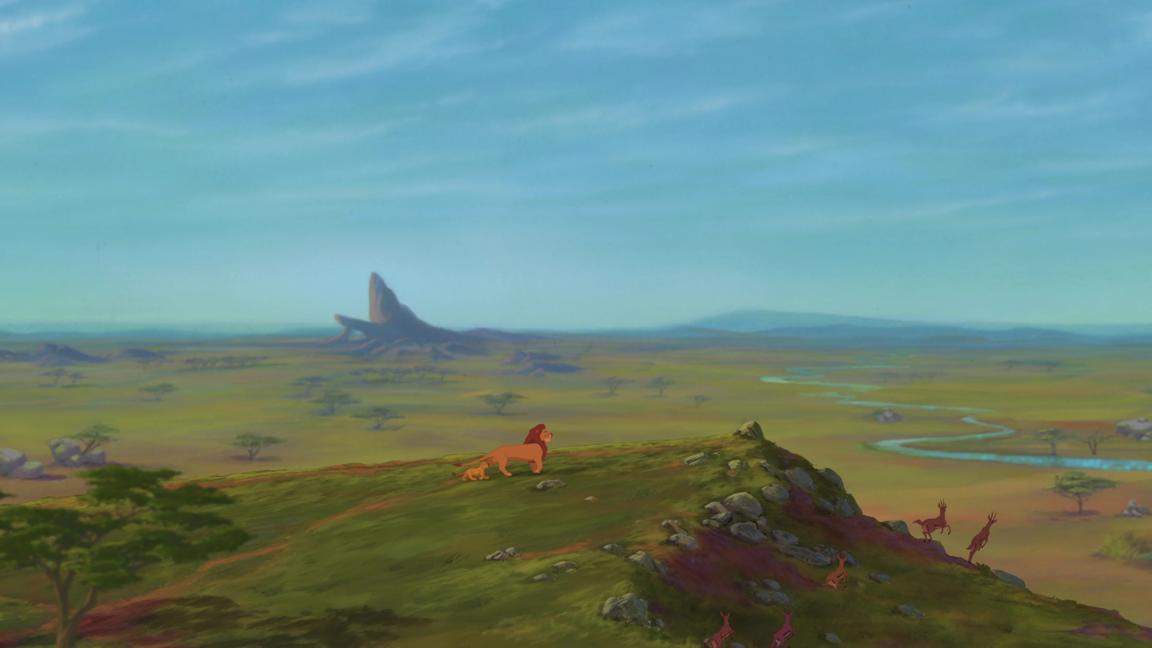 Vasudha Bansal, Grade 11
Vasudha Bansal, Grade 11
FEBRUARY ISSUE 2024 THE CELL CYCLE 27
Genetic Engineering: A Dystopian Nightmare
Aanika Krishnan, Grade 11
What is genetic engineering?
Arguably a buzzword in today’s world of science, it describes the modification or manipulation of genetic material using biotechnology. This ability proves to be an incredibly powerful tool that can be both a blessing and a curse. Diseases such as cancer, diabetes, and cystic fibrosis are combatted through genetic therapy, while genetically modified (GM) crops are a step towards tackling world hunger.
On the darker side, genetic engineering poses serious ethical concerns. For one: biological warfare, such as Japan’s propagation of deadly diseases on Chinese civilians during WWII There was even an accidental outbreak of ‘Invisible Anthrax” resulting in an epidemic in the Soviet Union, in 1979 But the crux of the debate appears to be the rise of the eugenics movement. Eugenics
refers to “the practice or advocacy of controlled selective breeding of human populations to improve their genetic composition ”
Conceivably the most gruesome use of eugenics was by Adolf Hitler in Nazi Germany, who “weeded out” individuals by forced sterilisations (and not to mention, genocide) to uphold the Aryan race.
The science-fiction film Gattaca (1979) depicts a dystopian future wherein scientists use reproductive technology to produce babies that are genetically superior, curtailing undesirable traits. The protagonist Vincent Freeman is naturally born, rendering him an ‘invalid’. He and others like him are thus subjected to a lower social class amongst other deficits Vincent has a heart condition that would prevent him from participating in a space expedition by the Gattaca Aerospace Corporation.
To make this possible, he must climb the social ladder by illegally presenting a genetically enhanced person’s DNA as his own, which he does Another dystopian science-fiction/thriller Blade Runner 2049 portrays the publicization of a genetic database in a futuristic society. Certain individuals called ‘replicants’ are bioengineered, while others are humans To distinguish between humans and replicants, the LAPD must employ such a database.
The themes proposed by these films, namely genetic discrimination and genetic privacy, reflect the consequences of genetic engineering in the real world So, while finding fascination in this slowly but surely growing study isn’t unreasonable, we must be wary of bioethical compromises that may arise.
FEBRUARY ISSUE 2024 THE CELL CYCLE 28
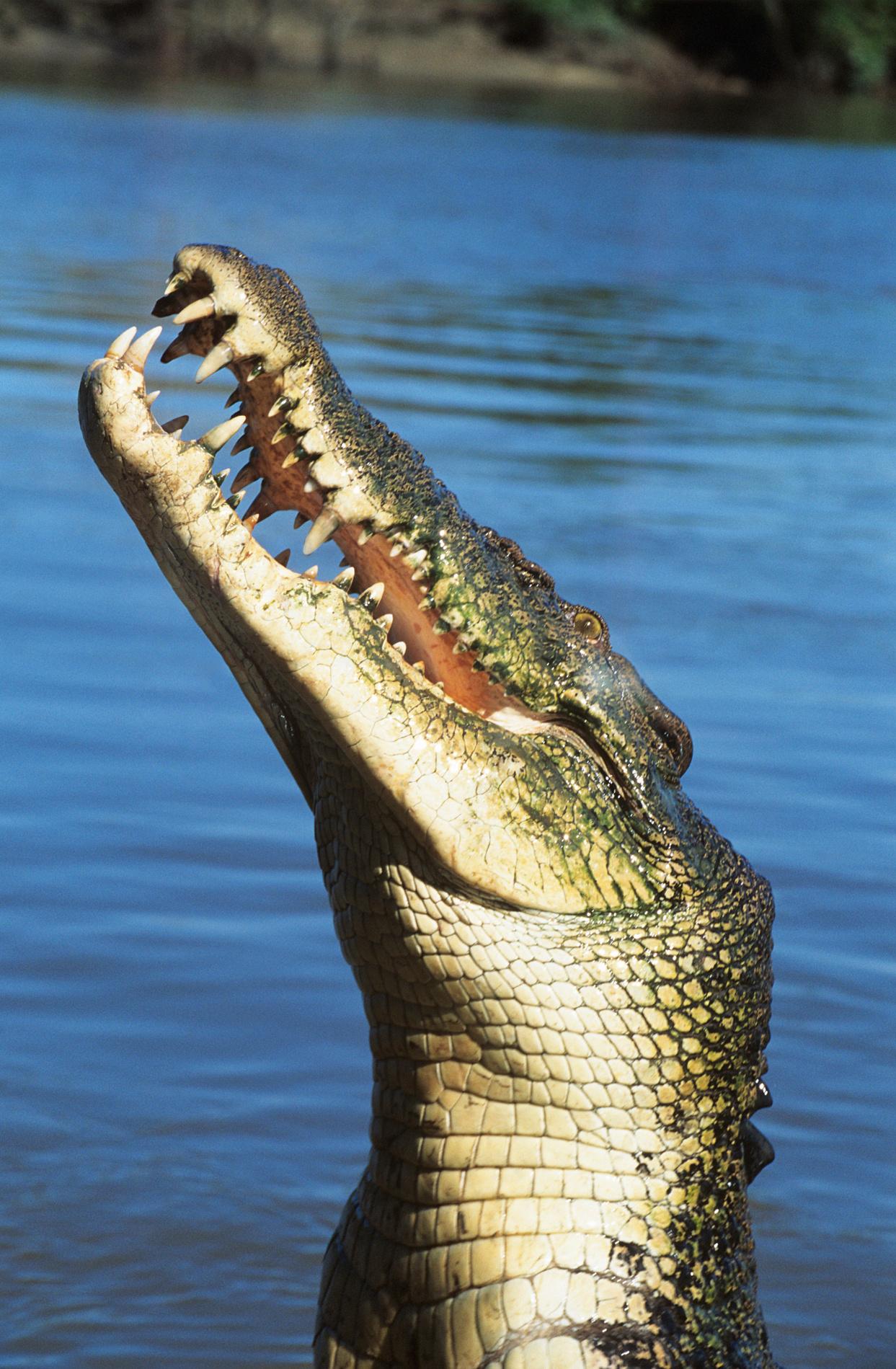
Animal Planet
Why Do Poison Dart Frogs ‘Tap Dance’ With Their Toes?
Spraha TS, Grade 11
Amongst the wilderness of the animal kingdom, dance is not an uncommon form of communication. From the synchronized dances of flamingos to the waltzes of scorpions, each species has its moves, unique to its kind. However, one such behaviour has particularly stood out and intrigued scientists: The tap dancing of poison dart frogs. What sets these amphibians apart is that their intricate footwork is not a display for potential mates but rather a tool employed during hunting. Scientists have long observed this
behaviour of poison dart frogs, where individuals rapidly tap the middle toes of their hind feet, sometimes reaching an astonishing 500 taps per minute, in the presence of prey. Despite this observation, the purpose of this tap dancing remained elusive. Now, researchers from the University of Illinois Urbana-Champaign (UIUC) believe they are one step closer to unravelling the mystery.
In a series of experiments centred around the Dyeing poison dart frog, biologists Eva Fischer and Thomas Parrish conducted highspeed video recordings of 22 frogs in their enclosures. The researchers incorporated various natural ground covers such as leaves, soil, and rocks During feeding sessions, half a teaspoon of live fruit flies, a favourite snack of these frogs, was introduced into the terrarium.
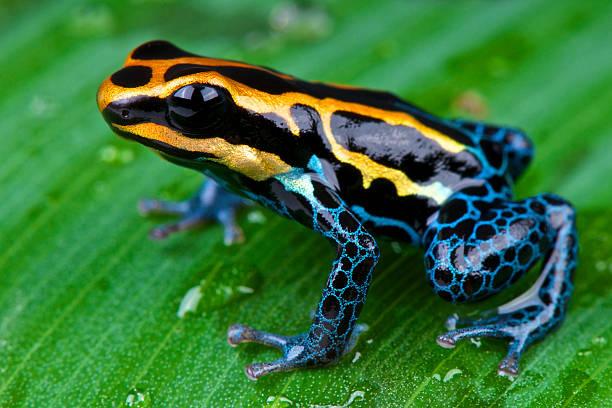
The results were astonishing: the frogs exhibited a significant increase in toe-tapping frequency, averaging 389 taps per minute when flies were present, in contrast to a mere 50 taps per minute when no prey was around. The researchers also placed the flies in closed petri dishes, making them visible but out of reach. In this scenario, the toe-tapping rate slowed down to approximately 50 taps per minute, indicating that the frogs adjusted their tap rate based on the feasibility and ease of capturing prey.
Notably, the researchers observed variations in tap rates depending on the surface beneath the frogs When placed on leaves, the tap rate averaged 255 per minute, while on soil, agar gel, and glass, the rates dropped to 98, 118, and 64 taps per minute, respectively. The researchers hypothesize that leaves,
FEBRUARY ISSUE 2024 THE CELL CYCLE 30
frogs with longer middle toes.
While these findings provide a brand-new insight into the world of poison dart frogs, it is important to note that they are yet to undergo peer review The intricate dance of these amphibians continues to captivate researchers, promising further revelations about the hidden complexities of animal behaviour being more efficient at transmitting vibrations, might play a crucial role in encouraging prey to move.
Despite these intriguing findings, the correlation between higher ‘tap’ rates and increased hunting success proved inconsistent Another study conducted by researchers at the University of Magdalena in Colombia, published in the journal Evolutionary Ecology, supported some of these conclusions It revealed that 37 percent of the time, frogs accelerated their toe-tapping just before striking, especially in
Scientists are now speculating about the purpose of this peculiar behaviour Some propose that it could be a form of deception, akin to how an angler fish lures its prey with light. Others suggest that toetapping might serve as a confirmation mechanism, ensuring that the potential meal is indeed prey. Lisa Schulte, a biologist from Goethe University, theorizes that by toe-tapping, the frog may trigger the prey to move, validating its edibility

FEBRUARY ISSUE 2024 THE CELL CYCLE 31
An Assortment Of
Trivia
Aditya Sankar, Grade 11
The world of Biology is full of countless wonderful eccentricities. Here’s a list of some fascinating (and hopefully surprising) trivia:
Ducks (amongst other birds) can sleep with one eye open. This is due to their adaptation of keeping one hemisphere of the brain active while the other rests. So, they can keep a watch for any predators while getting all the rest they need. Ducks are known to sleep in a row, leading to another curious adaptation; ONLY the ducks at the ends of the rows specifically keep the eyes on their exposed sides open.
The Y chromosome has the fewest number of genes, only around 344. (The most in humans is in Chromosome 1, which can go up to 3168 genes). This can be attributed to the tendency for degeneration of the genes on the Y chromosome which has led to almost 97% of the original genes being lost through evolutionary decay. This can be directly traced from the origin since the much better-preserved X chromosome is also believed to have originated from the same autosome (a non-sex chromosome) as the Y chromosome.
25% of the cholesterol content of your body is in the brain. This is because cholesterol is essential for its functioning as it is needed for the formation of synapses, regulating signal transduction(meaning the transmission of signals to a cell’s interior from its exterior), and maturing.
The liver can produce heat and help with the thermal regulation of organisms. This is through the process known as thermogenesis. The liver carries this out by the production and release of substances like bile acids that increase metabolism (thereby leading to more heat release) and affecting areas of the body such as adipose tissue and the sympathetic nervous system.
Crocodile blood is one of the few animal-based traditional medicines that may actually have a positive medicinal effect! Studies show that it may have fight tumours, inflammation, and harmful microbes. This is because they have incredibly strong antibodies (necessary considering how often they get wounded in environments where they could easily get infected) that may, at some point, be used as antibiotics for humans!
FEBRUARY ISSUE 2024 THE CELL CYCLE
32

Of Health And Happiness
BreakingDownTheStigma AroundHIV/AIDS!
Learn The Facts About This Misconstrued Disease
Nysha Mordani, Grade 11
HIV is a virus that stands for Human Immunodeficiency Virus. It affects and attacks the body’s immune system and eventually leads to AIDS, which stands for Acquired Immunodeficiency Syndrome, which leads to further failure of the immune system allowing lethal infections and cancers to grow and thrive in our body. So how does this virus spread? We will learn about that now!
It can spread by:
Transfusion of blood
Semen and vaginal fluid during sexual intercourse
Anal mucus
Breast milk
An often, misconstrued opinion about HIV is that it can be transmitted by coughing/sneezing which is completely an erroneous assumption and builds unwanted and discriminatory stigma around people with HIV. For some, it cannot be prevented or it is too late, since they obtain it from their mothers during breast feeding Other milk options are available to prevent the transmission of this disease from mothers to children.
History of HIV/AIDS
The first cases of HIV/AIDS emerged in the early 1980s, observed among homosexual men in the United States, quickly spreading through the nation. In 1983, scientists identified this virus as HIV spreading throughout the world leading it to cause a global impact. Causing numerous deaths in Africa with individuals experiencing devastating losses of loved ones When the real and scientifically accurate reason for
the spread of this disease was discovered in the 1990s, an admirable figure, Princess Diana, caused global controversy when she shook hands with an AIDS patient, destroying the misconceptions people had about this disease
This truly helped fight discrimination against AIDS patients since it raised the question; if the princess herself can shake hands with an AIDS patient, why can’t we?

FEBRUARY ISSUE 2024 THE CELL CYCLE
34
Symptoms
The symptoms of this disease are:
Fever and muscular pain
Headaches and sore throat
Night sweating
Cold sores/mouth sores, yeast infection
Diarrhea
Severe weight loss
Once completely developed in the body, leads to a severe lack of immunity and the infected can develop lethal diseases such as Tuberculosis, cancer, and other bacterial infections. This is caused due to the weakened immune system.
Treatment and Prevention
As mentioned before, in the 1990s, advancements in HIV/AIDS research skyrocketed in the United States with the emergence and approval of the female condom, and oral testing (the first nonblood-based antibody test)
The U S was alarmed since HIV became the leading cause of death of American individuals, pushing research heavily and leading to radical treatments. Highly active antiretroviral therapy became the newfound treatment for AIDS, leading to a significant decrease in cases in 1996.
What is the current treatment and prevention for AIDS?
There is no cure for HIV. However the antiretroviral treatment is still used to treat patients, which inhibits viral replication in the body It is the most effective treatment till date; these medicines are the best chance for controlling HIV proliferation in the body. If engaging in sexual intercourse, doctors suggest to make sure your partner and you get tested for HIV or other STIs to prevent the spread of this disease. Intravenous drug users are very prone to this infection, due to sharing of needles with other users
The purpose of this article is to educate people about the truth behind AIDS, and teach them not to build stigmas around those who have it.
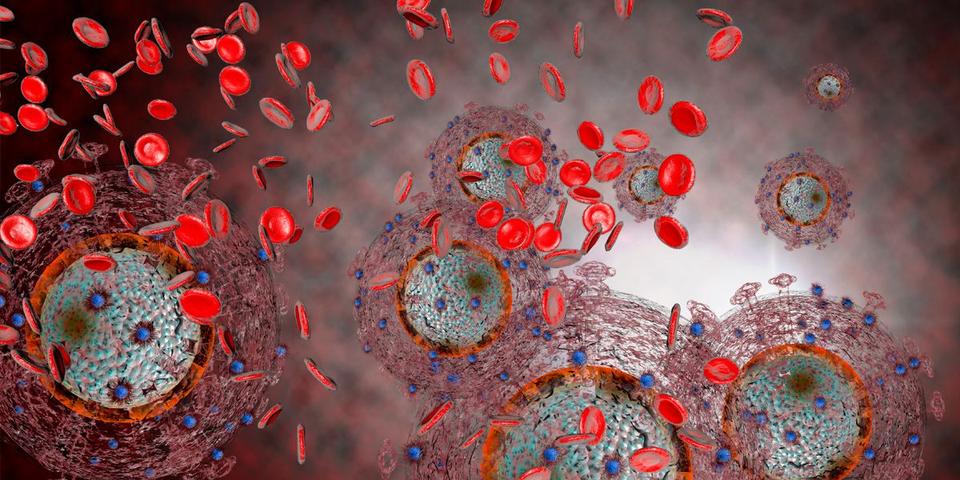
FEBRUARY ISSUE 2024 THE CELL CYCLE 35
Instant Noodles: Friend or Foe?
Instant noodles are the e modern convenience; affordability, customizab variety of flavours are w them appealing to a wide people. But why must consume them frequently?
Instant noodles are ultrafoods, and so they con amounts of sugar, s saturated fats. Apart fr they lack the fibre, minerals, and proteins required by the human body. It is always recommended by health experts to stay away from these ultraprocessed foods, as they increase th i k f d l i i

So, should convenience be prioritised at the cost of health?
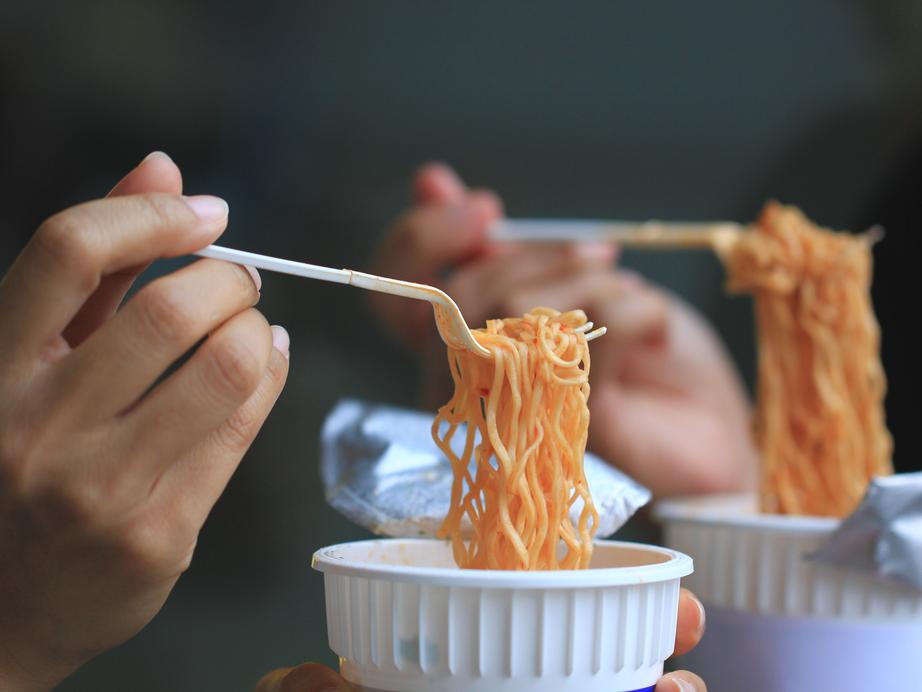
Instant noodles are packed with merous flavour enhancers, a ificant one being Monosodium tamate (MSG). These additives, heir names suggest, enhance the our and umami-taste of the dles, improving their atability. There is a common ception that MSG is what ses instant noodles to be ictive. However, the research on addictive properties of MSG is omplete and has not provided a clusion yet, so the full blame for noodles’ addictive nature not be placed on MSG.
n be assumed, though, is re is a combination of including its taste, nce, and enticing ce on television, that can the noodles’ enduring y. sion, just like a moth to a e rich flavours of instant an by

FEBRUARY ISSUE 2024 THE CELL CYCLE
Adithi Ponnambalam, Grade 11
36
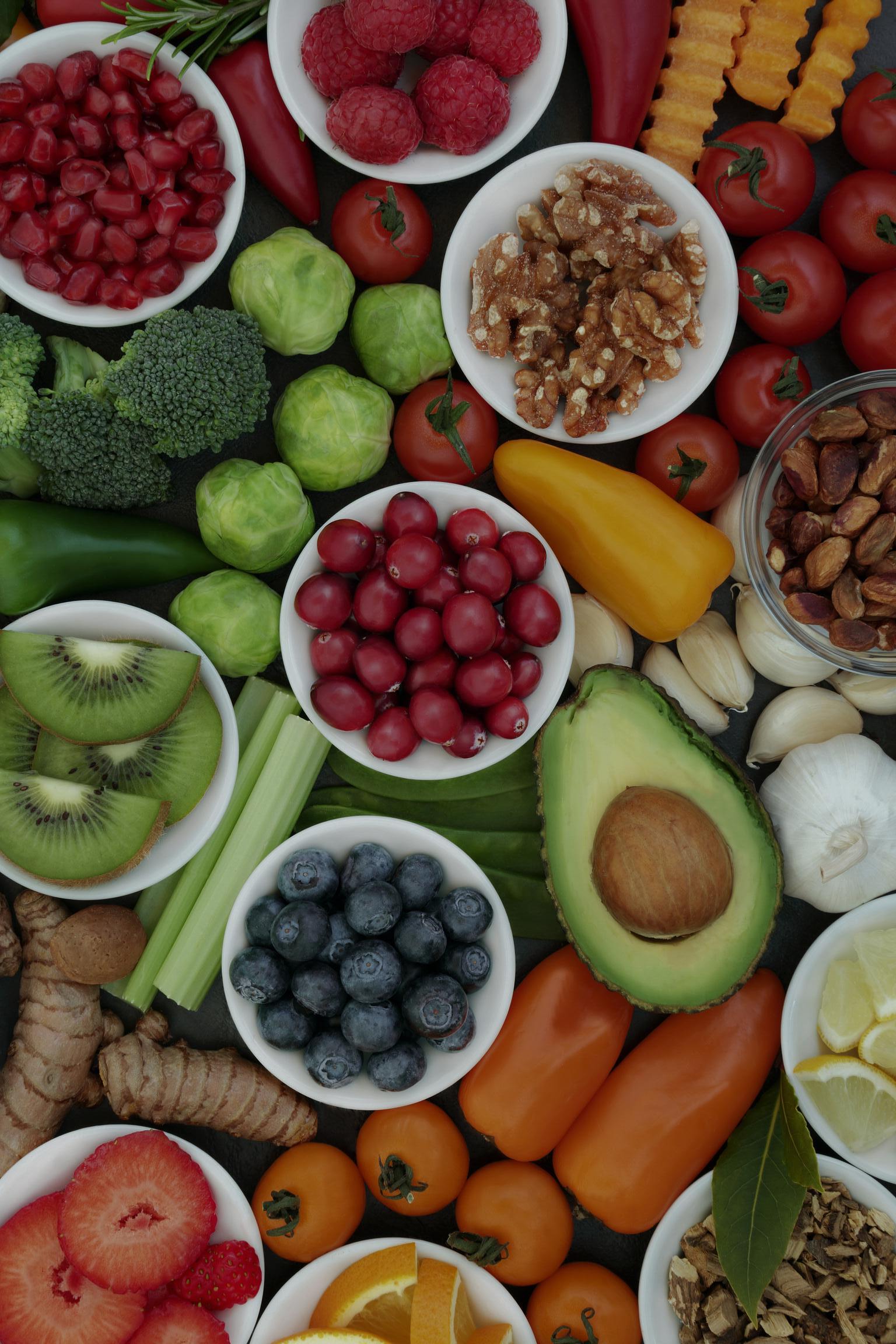
Brain Juice: How Does The Brain Affect The Body?
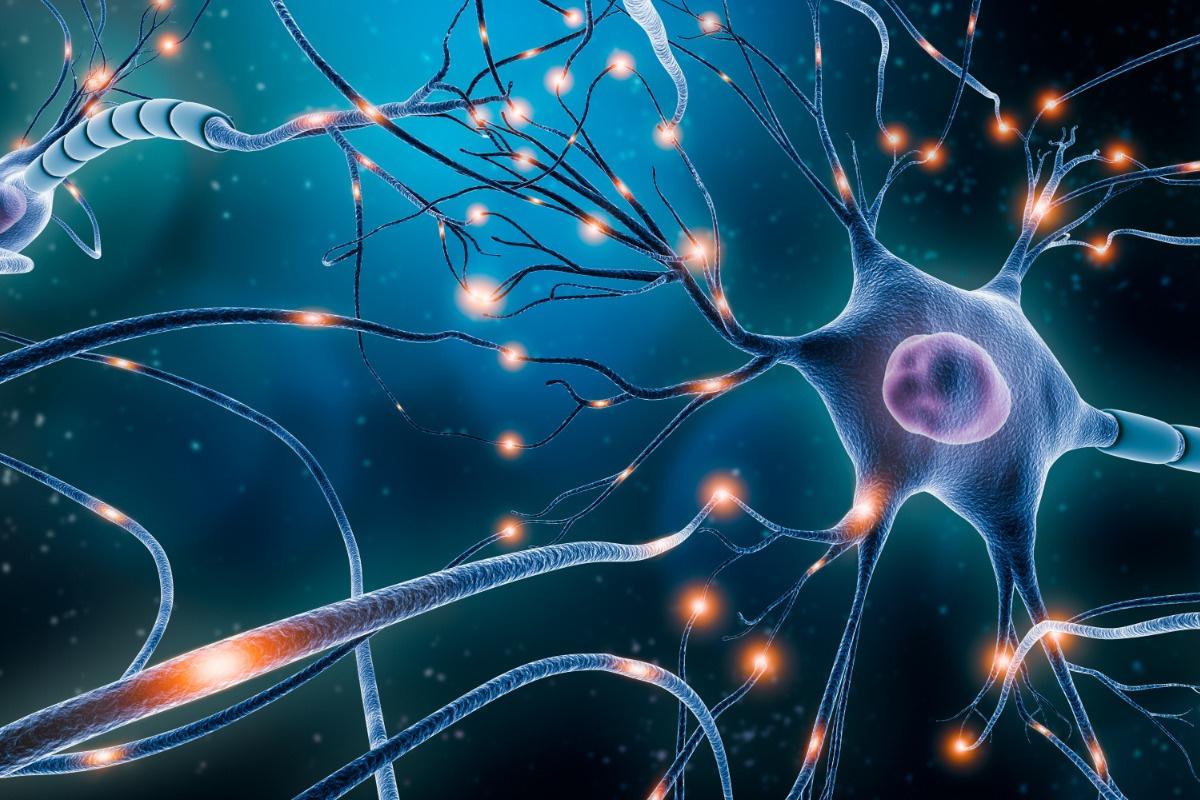
FEBRUARY ISSUE 2024 THE CELL CYCLE
Sneha Ganti, Grade 11
38

39
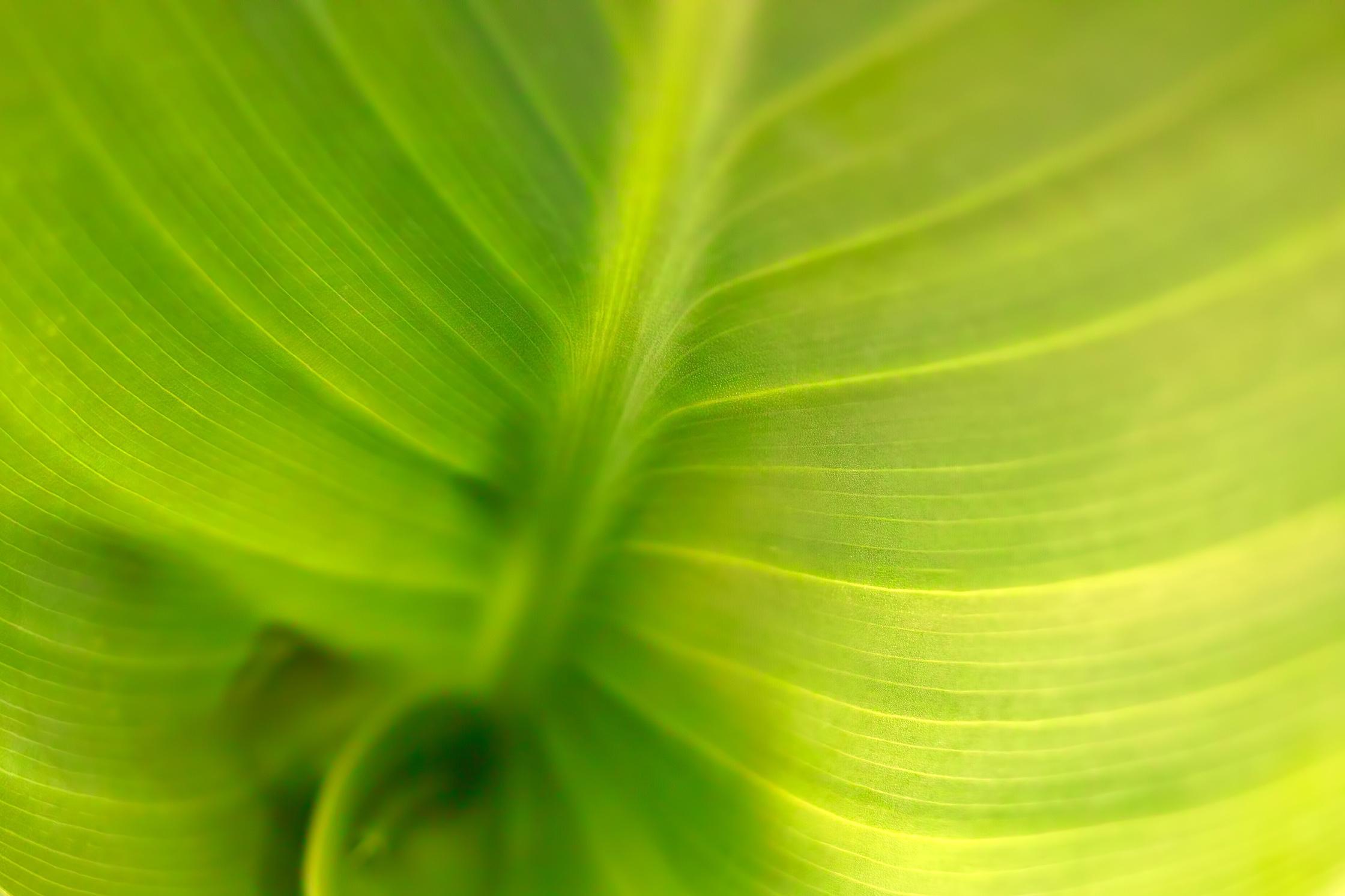
BackToThe Basics
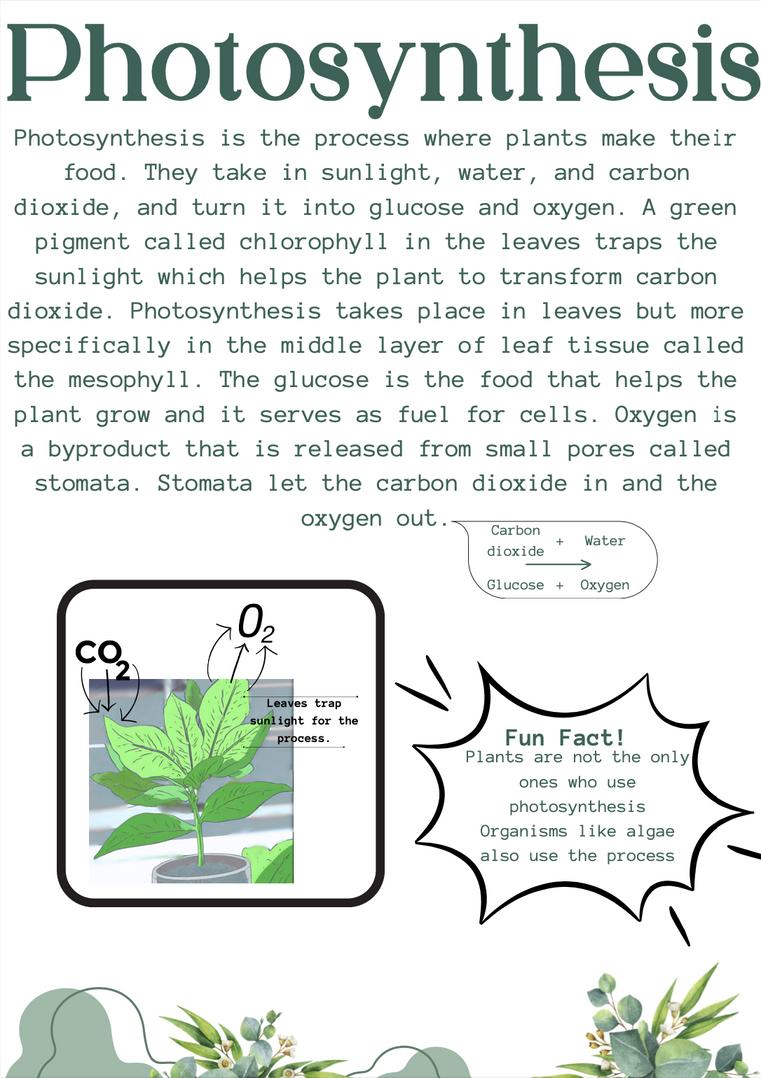
FEBRUARY ISSUE 2024 THE CELL CYCLE
41
Tia Shukla, Grade 6
Acknowledgements

The February Issue rs. Your dedication, drive, a on of knowledge Each issue sees you bringing forth articles of unmatched depth and creativity, captivating our readers and inspiring new ways of thinking. Your contributions are truly valued and celebrated.
To our readers, we extend our heartfelt gratitude for your unwavering interest and invaluable feedback. The Cell Cycle is a dynamic publication committed to continuous growth and improvement. To achieve this, we need your help Reach out to us via Instagram @thecellcyclemagazine or email at sanaaya@tisb ac in with your thoughts, questions, or critiques
Thank you to the SLT at TISB and Ms. Deepa L, our teacher supervisor. Last but not the least, a big thank you to Canva and Issuu for always having our back.
FERUARY ISSUE 2024 THE CELL CYCLE 42
Bibliography
An Assortment of Trivia
https://www gi alaska edu/alaska-science-forum/bird-brains-stay-alert-while-duckssleep#:~:text=Researchers%20have%20found%20that%20ducks,a%20row%20of%20mallards%20sleeping https://www.nature.com/articles/s41598-020-589972#:~:text=The%20human%20X%20and%20Y,conserved%20on%20the%20X%20chromosome.
https://www.tocris.com/cell-biology/signaltransduction#:~:text=Signal%20transduction%20(also%20known%20as,initiated%20by%20cell%2Dsurface%20receptors
https://pubmed ncbi nlm nih gov/22269162/#:~:text=Lowering%20cholesterol%20levels%20may%20impair,component%20of%20th e%20cell%20membrane
https://www mdpi com/2073-4409/11/23/3812
https://www ncbi nlm nih gov/pmc/articles/PMC4837572/#:~:text=Cholesterol%20is%20a%20major%20lipid,%2Fg%20tissue%20%5 B1%5D
https://pubmed ncbi nlm nih gov/33987869/#:~:text=Further%20in%20vitro%20and%20in,and%20enhancement%20of%20wound% 20healing.
https://www.wired.com/2005/08/antibiotics-from-crocodile-blood/
Genetic Engineering: A Dystopian Nightmare
https://www bu edu/wcp/Papers/Bioe/BioeHay2 htm
https://english umd edu/research-innovation/journals/interpolations/interpolations-spring-2011/genetic-engineering-serious
https://www imdb com/title/tt0119177/plotsummary/
https://www synthego com/learn/genome-engineering-history
https://www history com/topics/european-history/eugenics
https://www.ojp.gov/ncjrs/virtual-library/abstracts/biological-warfare-historical-
perspective#:~:text=Despite%20the%20convention%2C%20biological%20weapons,people%20in%20Russia%20in%201979. https://embryo.asu.edu/pages/gattaca-1997
https://www.gradesaver.com/gattaca/study-guide/summary
https://www ncbi nlm nih gov/pmc/articles/PMC9731365/#:~:text=Blade%20Runner%202049%20thus%20differs,the%20loss%20of %20individual%20autonomy%20(
DNA Fingerprinting
https://youtu be/ZDZUAleWX78?si=3H3MnFLguGNYSaTk
https://youtu be/a5jmdh9AnS4?si=E0 PL4P6OIBDAQij
https://www.researchgate.net/figure/Gel-Electrophoresis-Apparatus fig1 343049817
https://www.nlm.nih.gov/ncbi/workshops/2022-10 Primer-BLAST/PCR.html
Instant Noodles: Friend or Foe?
https://www bhf org uk/informationsupport/heart-matters-magazine/news/behind-the-headlines/ultra-processed-foods#:~:text= Why%20are%20ultra%2Dprocessed%20foods%20bad%20for%20us%3F,responsible%20for%20negative%20health%20effect s
https://www healthline com/nutrition/ramen-noodles#bottom-line
https://studyfinds org/best-instant-ramen/
FEBRUARY ISSUE 2024 THE CELL CYCLE
43
The Cell Cycle:
A Magazine, A Voice, A Revolution.
















 Vasudha Bansal Grade 11
Aditi Ranga Grade 11
Saanvi Venugopal Grade 11
Nivrithi Balachandran Grade 6
Jinisha Setiya Grade 11
Manvi Mittal Grade 11
Vasudha Bansal Grade 11
Aditi Ranga Grade 11
Saanvi Venugopal Grade 11
Nivrithi Balachandran Grade 6
Jinisha Setiya Grade 11
Manvi Mittal Grade 11


 Jahan Jethani, Grade 11
Jahan Jethani, Grade 11




















 Vasudha Bansal, Grade 11
Vasudha Bansal, Grade 11













